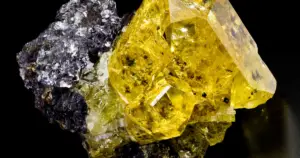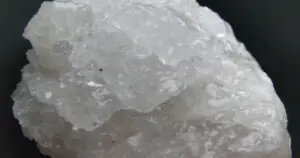Is Hematite a Mineral? Learn all about it

The crystal hematite has a lot of significance, even extraterrestrial. The planet Mars owes its color to the rock mineral hematite. An alteration of the minerals bearing Fe-, Hematite is formed by chemical and organic processes. It is an attributed formation but the mineral is not rare at all and found in many places on the surface of the Earth. In this article, we will explore if is Hematite a mineral and learn all about it.
Table of Contents
What is Hematite?
Hematite is one of the most abundant minerals that are available on the planet and is a very common iron ore. It is mostly found in the color red, which is widely used in pigmentation. Brown rocks like sandstone also owe their appearance to hematite. Its red color gives color to many other minerals. Other non-crystalline varieties or forms of hematite are the transformations of the Limonite, or hematite which has lost water due to extra explosion to heat.
Hematite is a mineral that is found in all three types of rocks, I.e., igneous, sedimentary and metamorphic. This makes it a bit vulnerable to weathering elements, although it does not largely affect the rock mineral in general because of its abundance on Earth’s surface. The sedimentary deposits of hematite might be extensive and consist of major iron ores. The abundance of the mineral can be explained by the fact that weathering of the ferric oxides by the various weathering components.
Check this post to know the relationship of Hematite with water.
Why is Hematite a mineral?
A mineral can be defined as a chemical compound that is solid and has a fairly well-defined chemical composition. It also has a specific crystal structure that naturally occurs in a pure form. Thus, to sum up, minerals are naturally occurring inorganic solids that have a definite composition and are generally ordered atomic arrangements.
Hematite is an iron oxide that has 70% iron and 30% oxygen. It can be mined and then evened or refined into iron. The crystallization of hematite takes place during the differentiation of magma or by precipitation from hydrothermal fluids which move through the rock masses. It is also formed through contact metamorphism when the hot liquid magma reacts with the adjacent rocks on its way.
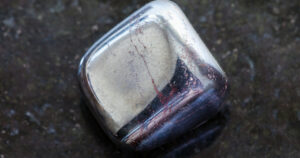
Minerals are formed in all geological environments. Different minerals are formed under different conditions, but hematite is formed under all the circumstances which include a wide range of physical and chemical states including temperature and pressure. It is formed in igneous, sedimentary, and also in metamorphic conditions. Under the igneous hematite mineral formation, it is formed through the crystallization of lava.
The sedimentary mineral hematite is formed by weathering and erosion, while the metamorphic formation is based on the leeching off the earlier form of the metal with an increase in temperature or pressure. Thus, all this formation procedure of the hematite aptly signifies it is a mineral.
Is Hematite a common mineral?
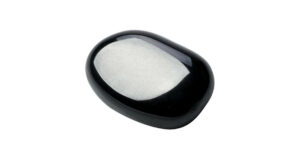
Hematite is one of the most common minerals found on the surface of the Earth. Hematite is an ore of iron. It can be found in all three kinds of rocks: metamorphic, sedimentary, and igneous. it is therefore available in almost all the corners of the Earth.
What kind of rock is Hematite?
Large chunks of ore bodies of hematite usually consist of sedimentary origin. It is widely seen in sedimentary rocks in cement form. Ore bodies of high quality, which can be found in metamorphic rocks are a result of contact metasomatism. Hematite can also be found in igneous rocks as an accessory mineral. The red color of the soils is due to the presence of hematite in them.
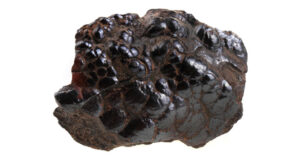
Hematite is a crystal class rock. The hematite crystals formed in nature are generally formed from the igneous process- that is, through stabilization of the cooling down liquid and hardening of the same. This whole process is also known as crystallization. The liquid through which the crystals are formed is generally magma or lava.
These crystals are also formed when the water evaporates from any natural mixture. In the process of sedimentation too, hematite crystals are formed by the joining of atoms and the creation of a uniform and repetitive pattern which makes the crystal glow. This is how the hematite rock crystals are formed naturally.
What minerals are found with Hematite?
As stated earlier, hematite is very abundant on Earth. But what might come as a surprise is that it is often not found alone and rather with other minerals. It is mixed with other minerals, like magnetite. Hematite is formed by the reaction of hot magmas taking in the surrounding materials and is very likely to be eroded. it is concentrated into layers in the sedimentary beds by separating through gravity distribution.
This mineral can also precipitate out from the lake waters, eventually forming a bed on the lake bottoms. Thus, these all lead to hematite always being found collectively with other minerals.
What are the uses of Hematite minerals?
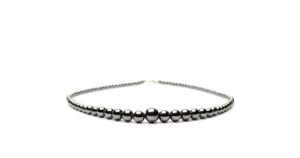
- The most general use of hematite is that of being mined for iron. But it has several other uses which date back to even the earliest possible civilizations. Hematite has been on the earth’s surface for a long time and is, therefore, one of the oldest minerals to be used or commercialized.
- The mineral is one of the main ingredients for the “red ochre” which is a pigment used in paints, glazes, makeup, and even in the drawings of the ancient paleolithic eras. The Renaissance era had remarkable uses of the red ochre during that period and it was widely acclaimed. Since the mineral is present in both the metallic and crystalline forms,
- Hematite is used in making jewelry. It is also used in tumbled or polished surfaces to give them a smooth metallic look. These can be further used in the beads in jewelry which are very pretty to look at and come in different shapes and sizes.
- Hematite is also used as a healing stone that deals with physical and mental problems like anemia, insomnia, and other issues related to blood pressure.
- Hematite is also said to be a very calming crystal that can be worn to stabilize mental health or to naturally upgrade the thinking system. It is said to make a person stronger, more confident, and more open to challenges rather than just succumbing to situations.
- There is also a very interesting medical use that hematite has- it can stop radiation from the X-rays, so it is used for radiation shielding in various medical equipment.
The most remarkable use of hematite is that of its natural origin: it is used in the production of iron. Hematite accounts for large amounts of iron production. It is available throughout the world naturally as well as virtually. The mineral is therefore mined in the biggest countries to obtain iron from it. These mines account for over 100 million tons of iron ore every year.
Hematite can be grounded into a fine powder, which when mixed with water makes a liquid that has high specific gravity. This liquid can be used in the “float-sink” process in the manufacture of coal and other materials of minerals.
The crushed coal has a very low specific gravity, which when placed on a heavy liquid cleans coal floats and other impurities that have low specific gravity, for example, pyrite sink. that when mixed with water will make a liquid with a very high specific gravity.
Conclusion
Thus, the mineral hematite is one of the most efficient and useful ones out there. Its uses are vast and are also found in abundance. It is even used in polishing various compounds such as the “red rouge” and the “jeweler’s rouge”. The former is a hematite powder that is used to polish brass and other soft metals. This powder can also be used for polishing shell casings.
FAQs
- What is Hematite fracture?
The fracture of hematite is conchoidal. This means that the fractures are developed in brittle materials. It is characterized by smooth curving surfaces. Conchoidal fractures resemble the interior of a seashell and are commonly observed in glass and quartz.
2. Where is Hematite found?
Great amounts of hematite are found in banded iron formations. Gray hematite is usually found in places that have standing and stagnant water. This might also include hot springs of minerals which can be observed in the Yellowstone National Park in North America.
The largest production of hematite which is nearly a 75vmillion tons of the same comes from one of the sedimentary deposits in the Lake Superior district in North America. The hematite is mined in large quantities in China, Venezuela, South Africa, Brazil, and South Africa. It is also mined in the greater part of the U.S and Canada.
3. What is a kidney ore?
The kidney ore is a variety of hematite that is shaped in the form of a human kidney. it is a reniform or a botryoidal variety of the hematite mineral, its internal structure is shaped in that of nodules and is usually concentric and very radiating.

